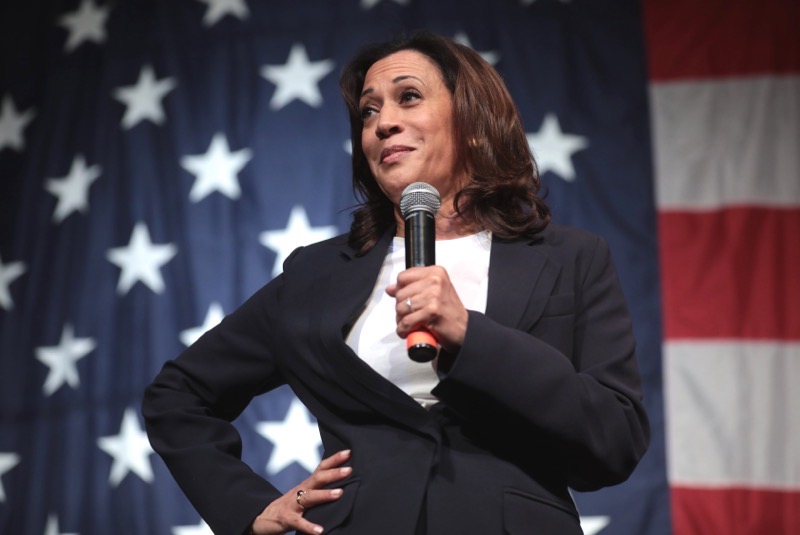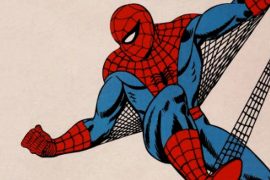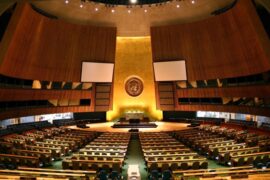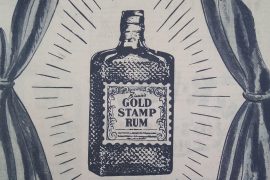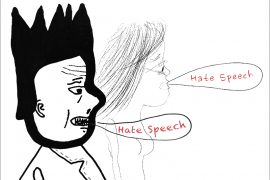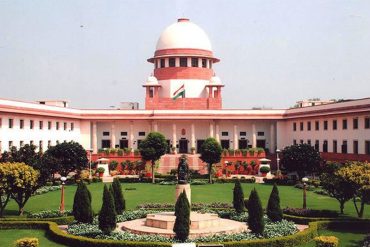Years ago, when Kamala Harris joined Joe Biden as his Vice Presidential candidate, South Asians referred to her as ‘Kamala Auntie’ and celebrated her meteoric rise to the top of the American political ladder. But even as ‘Comma-la’ made a show of her ‘Indian identity’ — by narrating stories about her mother and making dosa with Mindy Kaling — some voices within the South Asian community criticised her for identifying as ‘black’. It is almost as if they were offended that she emphasised her African American identity.
Race relations are not talked about explicitly in South Asian households. There are unwritten rules that dictate their conduct, particularly when it comes to black people. For instance, while most South Asians may begrudgingly accept their son or daughter marrying a white person, they would not agree to them marrying a black person. A ‘no Blacks’ marriage rule has been a long-standing secret in South Asian households. So is the use of racial slurs – such as the N* word or ‘Kaala’ (Black) – in private.
It’s as if South Asians have settled themselves in a hierarchy of races where they consider themselves to be above black people. The racial hierarchy is similar to the hierarchy of the caste system in which low-caste Hindus, usually darker-skinned people, are subjected to violence, ostracised and discriminated against. Their opportunities to grow are limited, preventing them from thriving and climbing the social ladder.
Asian immigrants who came to the United States after 1965 considered themselves to be the ‘model minority.’ It’s a myth through which white people in power dismissed the oppression of non-Asian minorities, specifically black people, by upholding Asians as ‘capable’ and ‘hardworking.‘ The internalisation of such a mythical hierarchy can be attributed to the system of discrimination that persists in the sub-continent, primarily based on caste and the colour of the skin.
When Martin Luther King came to India in 1959, he visited a high school where the students belonged to castes that were considered as ‘untouchables.’ When the principal introduced King to the class, he said, ‘Young people, I would like to present to you a fellow untouchable from the United States of America.’
At first, King was shocked as he was referred to as an ‘untouchable’ and did not see the connection. But soon, he realised that the untouchables were people of the lowest rank in Indian society, stuck in poverty because of the discriminatory practices enforced by the higher castes — not very different from the people he was fighting for. When he realised that, he said:
Yes, I am an untouchable, and every negro in the United States of America is an untouchable.”
So, when the concept of model minorities was presented, it not only elevated the South Asians above the blacks but also made them supplementary props to uphold belief systems that were similar to those that were prevalent in the homeland — i.e., the South Asian home biases have helped shift the blame from the oppressors to the oppressed.
The roles of stereotypes and biases in the United States, even if the model minority myth exists, do not shield South Asians from the evils of racism. The myth itself poses some really serious issues. First, it presents both ‘South Asians’ and ‘Blacks’ as monolithic identities. Second, it recklessly promotes the idea of the ‘American Dream’ and avoids addressing the systemic barriers that keep many from finding success in the United States. Third, it dismisses the struggles people of colour have faced in the United States.
Since the 1920s, the U.S. immigration policy has been based on a quota system that regulates the number of immigrants from a specific nationality that enter the United States. The laws were conveniently moulded to exclude the ‘undesirable‘ races to maintain a ‘white supremacist immigration law.’ The title — ‘undesirables’ — was shared by all those who did not belong to Northern and Western Europe.
In the U.S v. Bhagat Singh Thind’s case of 1923, it was clearly defined that South Asians were not classified as white, an argument based on which many received citizenship in the court of California. Those who are put on the pedestal as a ‘highly educated’ and ‘high-earning group’ were unwanted because of the colour of their skin. With a quota of 100 persons, the U.S. immigration law was of no use as Indians could enter the United States but could not stay or naturalise.
Until 1965, several regulations were enforced to limit immigration from all South Asian countries. Like every minority group which has been subjected to derogatory terms, South Asians too were referred to as the ‘brown hordes.‘ However, something changed in the 1960s, during the height of the Civil Rights Movement. Success stories of South Asians and their ability to ‘bridge the gap’ with their education, skills, and hard work were published extensively. Newspapers began to glorify them and started sharing stories of their enormous contributions to American society.
In the 1960s, the civil rights movement, which stood against white supremacy and discrimination against the blacks, increased anxieties amongst the white people. The modern minority myth became a weapon to deny black poverty as a result of systemic racism. If Asians could achieve the American dream, why couldn’t African Americans?
The Hart-Celler Act, enacted on 3rd October 1965, changed immigration policies. The act ended the national quota system and postulated immigration of the relatives of U.S. citizens, professionals, and individuals with specialised skills. The law allowed immigrants who could contribute to the economy.
The Asians who made it through the checkpoints were already qualified, trained, and of educated backgrounds. The new group of immigrants were already trained to succeed, unlike the African Americans who were brought to the American grounds as slaves.
The author of the book The Color of Success argues that when Asians were finally allowed to get through the borders, they found the need to portray themselves as upstanding citizens. They began making efforts to present themselves up to the standards of respect and dignity and sought acceptance and recognition. It was a survival tactic to avoid being the target of racism.
White Americans began to invest in this idea as it took away the blame of racism from them and shifted it to the Black community’s inability to be ideal citizens. The model minority myth pits the immigrant communities against one another as competitors.
Since Asians have been portrayed as the capable ones, Black Americans are shown as their opposite. Internal stereotypes formed prejudices that one deserves to be on the land while the other doesn’t, and hence, it’s fair for them to receive ill treatment and unequal resources.
Such tactics work in combination with home-borne anti-Blackness and the ease with which South Asians fit themselves into the system of hierarchy. This makes South Asians a device to supplement the roots of systemic racism, just as the myth of model minority is meant to do.
As people of colour, South Asians must realise that they have a history of suffering racial discrimination. It only makes sense to recognise these evils within the community to stand in solidarity against racial discrimination. As one’s success would not result in another’s loss, putting one down will not truly alleviate the other.
It’s time for South Asians to stop discriminating against black people by considering themselves to be the ‘model minorities.’ South Asians must support or celebrate ‘Comma-la auntie’ not because of her identity or race but because of her ability to deliver for the American people.
-30-
Copyright©Madras Courier, All Rights Reserved. You may share using our article tools. Please don't cut articles from madrascourier.com and redistribute by email, post to the web, mobile phone or social media.Please send in your feed back and comments to [email protected]

